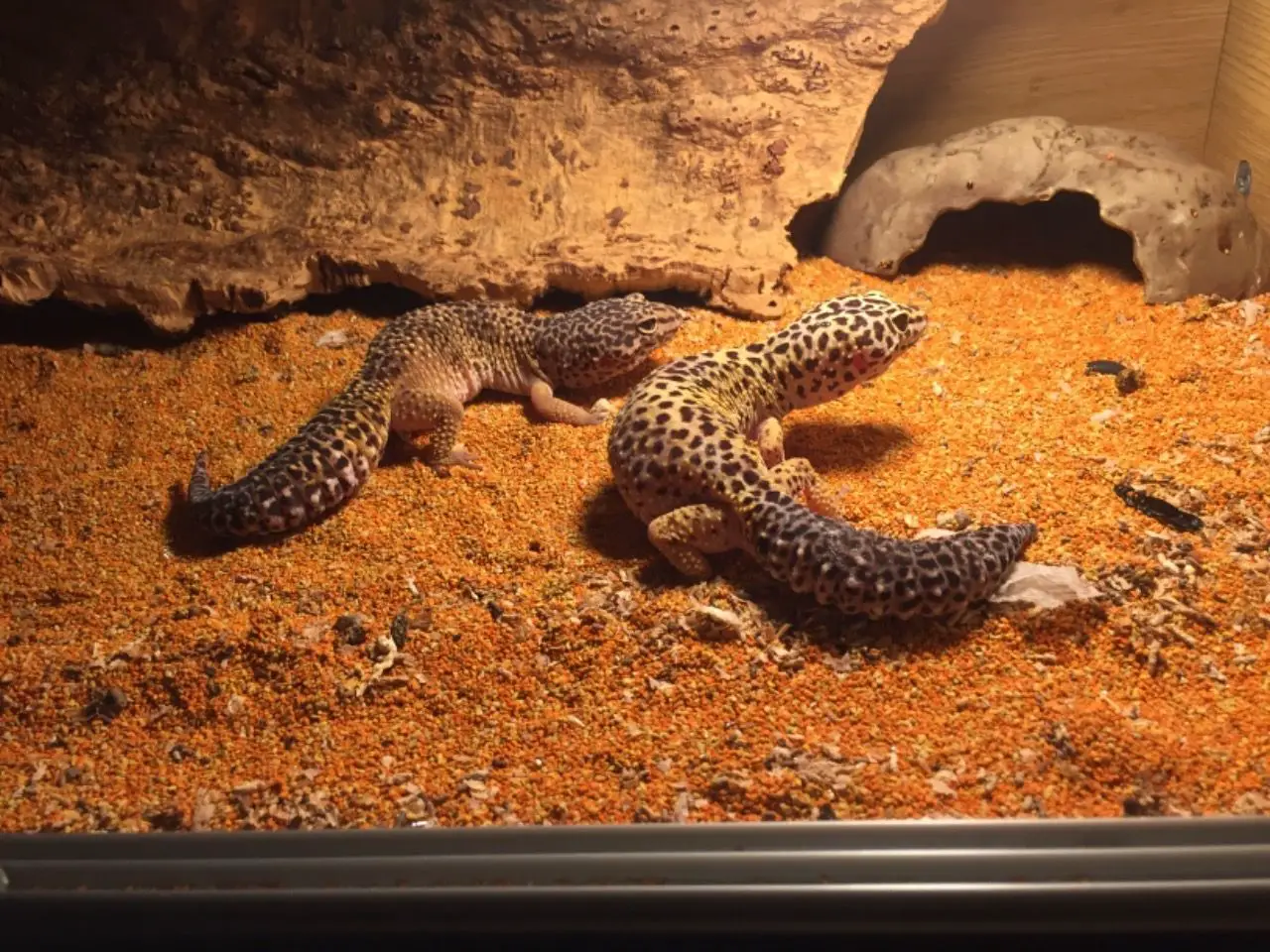The leopard gecko is a lizard that is native to areas in Afghanistan, Pakistan and India so it goes without saying that this breed likes a warm environment. But will a leopard gecko die without heat?
Coupled up with the fact that being a reptile, a leopard gecko is cold blooded. This means that it gets all of its heat and energy from its surrounding environment. Because of this the leopard geckos need warmth to survive.
In this article we are going to be looking at if pet leopard geckos can survive in captivity without heat, be it heat mats or basking lamps.
Do leopard geckos need heat to live?
Will a leopard gecko die without heat? Lets get straight to the point. We will answer the main question straight from the off and below I will offer some advice on hearing your Leopard gecko.
So will a leopard gecko die without heat?
The Leopard Gecko is a cold blooded reptile and as such relies heavily on the external environment to get the heat that its body requires to function properly. For this reason, a leopard gecko will eventually die if it goes without heat for too long.
Always keep the temperature at around 30oC to keep your Leo functioning correctly.
Now that we know the answer to the question we can look at why exactly a gecko needs heat and ways that you can provide the right heat for your Leopard geckos. There are a few different ways, some are way better than others.
The reasons why leopard geckos need heat to live.
Us humans are warm blooded mammals and as such our bodies regulate our temperature for us. Unfortunately our little reptile buddies such as the leopard gecko are not built like that.
They are cold blooded, so instead of self heat regulation they rely on the environment they live in to give them the warmth that they need to live.
In kind of exactly the same way that we slow down and struggle in really cold conditions a gecko will behave the same way. The difference being though is that a survivable temperature to us is far to cold for a gecko.
Some of the problems a leopard gecko will face if it gets to cold include:
- Digestion issues. Geckos rely on heat to help digest their foods.
- Slow down. Without heat the gecko will not have the energy needed to move about.
- Breeding problems. The leopard geckos ability to breed will be hampered by cold temperatures.
- Death. Ultimately the leopard gecko is to cold for too long it will die.

Will a leopard gecko die without heat?
What temperature should a leopard geckos tank be?
Will a leopard gecko die without heat, what is the right temperature? As I mentioned above leopard geckos like and need a warm environment to survive. This goes for in the wild and at home in your vivarium.
When it comes to the best practices for keeping the temperature right for your gecko it is important to have two separate areas of the tank. One side warm and one side cool, this allows the gecko to be able to regulate its temperature needed.
I highly recommended that you keep your tank in the region of 86f-90f at the warm side. When it comes to the cool side of the tank the temperature should be around 75f-80f.
The best way to achieve this is to use one of the items below.
The best way to heat a leopard geckos tank.
In reality there are many ways to heat a leopard geckos tank, but I would not recommend them all. Some could actually cause your gecko to get some nasty injuries! So have a look below and decide which one is right for you.
Basking lamp.
Basking lamps provide plenty of heat from above for your Leopard gecko. They are a favourite amongst reptile owners especially owners of bearded dragons. Make sure to get a good basking lamp.
Personally they are not my preferred method of heating for my leopard geckos. The reason for this is because in nature leopard geckos do not tend to do much basking in the sun. This is because they are small reptiles and make easy prey when out in the open. Even though your gecko will enjoy the heat it may not enjoy being so exposed.
Hot rocks.
My advice is to never get a hot rock for your Leopard geckos tank. I have heard so many horror stories now where a leopard gecko has received severe burns from a hot rock.
They are just not suitable for this purpose and are definitely not worth the risk even though they are quite cheap.
Heat mats.
Now this is my personal favourite for heating up a leopard gecko tank. Using a heat mat underneath the substrate in your tank will stop the risk of burns. Make sure you get a good heat mat.
It will also allow your gecko to receive warmth the way that it prefers. From the ground below! In the wild you will actually see leopard geckos laying out flat on warm rocks soaking up the much needed warmth. This is the best way to provide the required heat.
How to make sure your Leopard geckos tank is the right temperature.
Ok so now we have provided the right type of heating for our leopard geckos. We have a heat mat at one side of the tank and a cool area at the other. So now we need to get each area to the required temperatures.
To do this I find it best to use two small digital thermometers at either side of the tank. This will provide you with an accurate way to keep on top of your geckos environment and allow you to set the heat mat accordingly.
Conclusion.
Will a leopard gecko die without heat? leopard geckos are pretty hardy lizards and are easy to care for. However one thing that they do suffer from is the cold so it is vital to provide the right type of heating for them. I highly recommend using a heat mat as a minimum but this couple up with a basking light will provide the perfect environment.
Providing the right temperatures will mean that your geckos can live a happy, long and healthy life.
Related questions.
Is a bigger tank better for getting the right temperature? No, in fact having a bigger tank can actually be problematic unless you are housing multiple leopard geckos. A single leopard gecko only needs a 10 gallon tank, any bigger and it may struggle to locate its heat source and cool areas. If you are housing multiple leopard geckos have a read of our Can Leopard Geckos be housed together? guide.
What substrate is better for temperature regulation? It is recommended to use either a stone/tile substrate that mimics the leopard geckos natural environment or paper towel substrate. Personally I prefer the tile/stone substrate as it makes the environment seem more natural and gives good protection to the gecko from touching the heat mat.
If you would like to read more helpful leopard gecko articles on this website check out this link!
